- Home
- Orhan Pamuk
Istanbul Page 20
Istanbul Read online
Page 20
But Gautier also had the sort of eye that could find melancholic beauty amid dirt and disorder. He shared the excitement of romantic literature for Greek and Roman ruins and the remains of vanished civilizations, even as he mocked the awe. During his youth, while still dreaming of becoming a painter, Gautier found the empty houses of the Doyenne cul-de-sac and the Saint-Thomas-du-Louvre Church (near the Louvre, next to which Nerval lived) very seductive on moonlit nights.
Leaving his hotel (in today’s Beyoğlu) and walking down through Galata to the shores of the Golden Horn, then crossing Galata Bridge (newly erected in 1853, it was, he said, a “bridge of boats”), Gautier and his French guide proceeded to Unkapanı and northwest; soon they “plunged into a labyrinth of Turkish lanes.” The farther they went, the more isolated they felt and the larger the pack of snarling dogs that followed them. Every time I read about the unpainted, darkened, dilapidated wooden houses, the broken-down fountains, the neglected tombs with their fallen-in roofs, and all the other things they observed during their walks, I am amazed that these places I saw while riding around in my father’s car a hundred years later were unchanged except for the cobblestones. It was because he, like me, thought they were beautiful that Gautier noticed the blackened, ruined wooden houses, the stone walls, the empty streets, and the cypresses without which no cemetery was complete. When I began my own wanderings around the same destitute and not yet westernized quarters (which, sadly, fire and concrete would soon obliterate), I found the view exhausting as he did, while still feeling urged on “from lane to lane, from square to square.” The call to prayer seemed to him, as it would later to me, addressed to the “mute, blind, and deaf houses falling here in silence and solitude.” He would think about the passage of time as he watched the people and creatures straggling past: an old woman, a lizard disappearing among the weeds, and two or three boys throwing stones into the basin of a broken-down fountain (this reminded him of a watercolor by Maxime du Camp, who’d visited the city two years earlier with Flaubert). When he grew hungry, he noticed how little the shops and restaurants in this part of the city had to offer, and he gobbled mulberries from the trees that brought color to the side streets and that, despite all the concrete, still do. He was attuned to the village atmosphere of the Greek neighborhoods of Samatya and Balat, the so-called Ghetto of Istanbul. The fronts of the houses in Balat were full of cracks, and the streets were dirty and muddy, but the Greek district of Fener was better cared for; whenever he saw the remains of a Byzantine wall or part of a great aqueduct, what he felt more than the durability of stone and brick was the impermanence of wood.
The most moving moments in these tiring, confusing walks come when Gautier catches sight of the Byzantine ruins running through these remote and destitute streets. Gautier conveys very powerfully the thickness and durability of walls: their upheaval, the fissures and ravages of time; the cracks that run the whole length of a tower (as a child, that scared me too); the fallen fragments scattered at its base (between Gautier’s time and ours, the great earthquake of 1894 caused considerable damage to the city walls). He describes the grass in the cracks and the fig trees, whose large green leaves soften the tops of the towers, the dullness of the abutting districts, the silence of these neighborhoods and their ramshackle houses. “It is difficult to believe there is a living city behind these dead ramparts!” wrote Gautier. “I do not believe there exists anywhere on earth [a thing] more austere and melancholy than this road, which runs for more than three miles between ruins on the one hand and a cemetery on the other.”
What happiness do I derive from such confirmations of Istanbul’s hüzün? Why have I devoted so much energy to convey to the reader the melancholy I feel in this city where I’ve spent my entire life?
In the last 150 years (1850–2000), I have no doubt that not only has hüzün ruled over Istanbul but that it has spread to the surrounding areas. What I have been trying to explain is that the roots of our hüzün are European: The concept was first explored, expressed, and poeticized in French (by Gautier, under the influence of his friend Nerval). So why is it that I care so much—why did my four melancholic writers care so much—about what Gautier and other Westerners have to say about Istanbul?
CHAPTER TWENTY-FIVE
Under Western Eyes
To some degree, we all worry about what foreigners and strangers think of us. But if anxiety brings us pain or clouds our relationship with reality, becoming more important than reality itself, this is a problem. My interest in how my city looks to western eyes is—as for most İstanbullus—very troubled; like all other Istanbul writers with one eye always on the West, I sometimes suffer in confusion.
When Ahmet Hamdi Tanpınar and Yahya Kemal were looking for an image of the city and a literature in which İstanbullus could see themselves, they studied Nerval’s and Gautier’s travel notes with great care. The Istanbul section of Tanpınar’s Five Cities is the most important text by a native writer about the twentieth-century city, and it might be described as a conversation with Nerval and Gautier that sometimes degenerates into a quarrel. At one point, Tanpınar talks of Lamartine, the French writer and politician who also visited Istanbul; after noting his “painstaking portrait” of Abdülmecit and insinuating that Lamartine’s History of Turkey (there was a fine eight-volume edition in my grandfather’s library) may have been paid for by Abdülmecit himself, he went on to warn that Nerval and Gautier’s assessments of Abdülmecit were less than penetrating because they were journalists whose readers “had made up their minds”; this gave the travelers no choice but to tell them what they wanted to hear. As for Gautier’s boasts of the sultan’s interest in the Italian lady accompanying the traveler and his fantasies of the sultan’s harem—Tanpınar found these (like the accounts of so many subsequent western travelers) to be of “dubious morality,” although he does allow that Gautier could not be blamed insofar as the harem “did indeed exist.”
This uneasy aside conveys the ambivalence that besets literary İstanbullus on reading western observations. Because the country is trying to westernize, what western writers say is desperately important, but whenever a western observer goes too far, the Istanbul reader, having gone to great lengths to acquaint himself with that writer and the culture he represents, cannot help but feel heartbroken. Above all, no one can really say what counts as “going too far.” A city, it may be said, owes its very character to the ways in which it “goes too far,” and while an outside observer can take things out of proportion by paying excessive attention to certain details, these are often the same details that come to define that city’s nature. (For example, when western travelers see cemeteries as part of the city’s everyday life, they are going too far. But as Flaubert noted, they would disappear as the city tried to become more western; today it is only by reading western travelers’ descriptions of cemeteries that we can understand how the city looked in their day.)
With the drive to westernize and the concurrent rise of Turkish nationalism, the love-hate relationship with the western gaze became all the more convoluted. The subjects that most obsessed western observers who set foot in Istanbul from the middle of the eighteenth century and throughout the nineteenth were the harem; the slave market (in Innocents Abroad, Mark Twain fantasized that the financial pages of big American papers might report the price and vital statistics of the latest crop of Circassian and Georgian girls); the beggars in the streets; the unimaginably huge burdens carried by hamals (during my childhood we were all uneasy when European tourists photographed the fearsome hamals I’d see crossing the Galata Bridge with tin piled high on their backs, but when an Istanbul photographer like Hilmi Şahenk chose the same subject, no one minded in the least); dervish lodges (one pasha told his friend and guest Nerval that the Rufai dervishes who ran around piercing themselves with skewers were “crazy” and advised him it was a waste of time to visit their lodges); and the seclusion of women. Istanbul’s westernized residents were all critical of these same things. But a wes
tern writer voicing even a mild objection would break their hearts and wound their nationalist pride.
The vicious circle is fed by westernizing intellectuals who long to hear the prominent writers and publishers of the West praise them for being like Westerners. Writers like Pierre Loti, by contrast, make no secret of loving Istanbul and the Turkish people for the opposite reason: for the preservation of their eastern particularity and their resistance to becoming western. In the days when Pierre Loti was criticizing İstanbullus for losing touch with their traditions, he had only a small following in Turkey, most of it, ironically, among the westernizing minority. But whenever the nation is embroiled in an international dispute, the westernized literary elite makes an indignant peace with Pierre Loti’s highly sentimental and exotic “Turko-phile” writings.
André Gide’s account of his travels through Turkey in 1914 offers nothing of this “Turk-loving” panacea. Quite the contrary: When he says he detests the Turks, he does not use the term in the proud nationalist way that is slowly coming into fashion but as a racial slur—the clothes the Turks wear are ugly, but the race deserves no better. He boasts that his travels have taught him that western civilization, particularly French civilization, is superior to all others. When Marche Turque was first published, Yahya Kemal, then the foremost Turkish poet, was deeply offended, but instead of publishing a response in the popular press as a writer might do today, he and other Turkish intellectuals hid their injury like a guilty secret and grieved in private. This can only mean that in their heart of hearts they feared Gide’s insults might be well-founded. A year after Gide’s book came out, Atatürk, the greatest westernizer of them all, instituted a revolution in dress, banning all clothing that wasn’t western.
When western observers speak ill of the city, I often find myself in agreement, taking more pleasure in their cold-blooded candor than in the condescending admiration of Pierre Loti, forever going on about Istanbul’s beauty, strangeness, and wondrous uniqueness. Most western travelers praise the city for its beauty and its people for their charms, but this is neither here nor there: What concerns us is what they read into what they see. In the mid-nineteenth century, French and English literature produced an ever richer image of Istanbul. Dervish lodges, fires, the beauty of cemeteries, the palace and its harem, the beggars, the packs of roaming dogs, the prohibition against drinking, the seclusion of women, the city’s air of mystery, the Bosphorus tour, and the beauty of the skyline—these things gave the city its exotic allure, and because the writers who came often stayed in the same places and used the same guides, they rarely saw anything to destoy their illusions. A new generation of travelers did slowly become aware that the Ottoman Empire was crumbling, and so had little cause to wonder about the secret of the Ottoman army’s success or the hidden workings of its government; instead of seeing the city as frightening and impenetrable, they came to see it as strange but amusing, a tourist attraction. For them, it was enough to have arrived; since they wrote mostly about the same things as their predecessors and saw travel as an end in itself, they were disinclined to dig deeper.
As trains and steamships brought Istanbul closer to the West, there were suddenly more western travelers wandering the streets, and this led many to speculate indulgently about what had brought them to this terrible place. Ignorance embroidered their pretensions and creative presumption prompted them to say exactly what they thought; even “cultivated” writers like André Gide saw no need to bother with cultural differences, the meaning of local rituals and traditions, or the social structures that underpinned them: A traveler, in his view, had the right to demand that Istanbul be amusing, distracting, upbeat. Having nothing of interest to say about the city, he and his ilk were confident enough to blame their boring, featureless subject, and they made notably little effort to hide their military and economic chauvinism from more “critical” western intellectuals. For them, the West set the standard for all humankind.
These writers came to Istanbul at a time when it had ceased to be exotic, due to westernization and the prohibitions of the Atatürk era—the banishing of the sultan, the closing of the harem and the dervish lodges, the tearing down of the wooden houses and other tourist attractions, and the replacement of the Ottoman Empire with the little imitative Republic of Turkey. After a long period when no one of consequence came to Istanbul, and local journalists interviewed all foreigners who turned up at the Hilton Hotel, the Russian-American poet Joseph Brodsky published a long piece entitled “Flight from Byzantium” in The New Yorker.
Perhaps because he was still smarting from W. H. Auden’s brutal review of the book recounting his journey to Iceland, Brodsky began with a long list of reasons he’d come to Istanbul (by plane). At the time I was living far from the city and wanted to read only good things about it, so his mockery was crushing, yet I was glad when Brodsky wrote, “How dated everything is here! Not old, ancient, antique, or even old-fashioned, but dated!” He was right. When the empire fell, the new Republic, while certain of its purpose, was unsure of its identity; the only way forward, its founders thought, was to foster a new concept of Turkishness, and this meant a certain cordon sanitaire to shut it off from the rest of the world. It was the end of the grand polyglot multicultural Istanbul of the imperial age; the city stagnated, emptied itself out, and became a monotonous monolingual town in black and white.
The cosmopolitian Istanbul I knew as a child had disappeared by the time I reached adulthood. In 1852, Gautier, like many other travelers of the day, had remarked that in the streets of Istanbul you could hear Turkish, Greek, Armenian, Italian, French, and English (and, more than either of the last two languages, Ladino, the medieval Spanish of the Jews who’d come to Istanbul after the Inquisition). Noting that many people in this “tower of Babel” were fluent in several languages, Gautier seems, like so many of his compatriots, to be slightly ashamed to have no language other than his mother tongue.
After the founding of the Republic and the violent rise of Turkification, after the state imposed sanctions on minorities—measures that some might describe as the final stage of the city’s “conquest” and others as ethnic cleansing—most of these languages disappeared. I witnessed this cultural cleansing as a child, for whenever anyone spoke Greek or Armenian too loudly in the street (you seldom heard Kurds advertising themselves in public during this period), someone would cry out, “Citizens, please speak Turkish!”—echoing what signs everywhere were saying.
My own troubled interest in even the most unreliable western travel writers does not issue from a simple love-hate relationship or blend of a confused anguish and a longing for approval. Leaving aside various official documents and the handful of city columnists who scolded İstanbullus for their poor comportment in the streets, İstanbullus themselves wrote very little about their city until the beginning of the twentieth century. The living, breathing city—its streets, its atmosphere, its smells, the rich variety of its everyday life—is something that only literature can convey, and for centuries the only literature our city inspired was penned by Westerners. We must look at Du Camp’s photographs and the engravings of western artists to see how the streets of Istanbul looked in the 1850s and what sorts of clothes people wore; if I wish to know what was going on in the streets, avenues, and squares where I have spent my whole life, a hundred, two hundred, four hundred years before I was born; if I want to know which square was then just an empty field, and which of today’s empty fields were once colonnaded squares; if I want to have some sense of how the people made their lives—unless I am prepared to spend years in the labyrinthine Ottoman archives, I can find my answers, however refracted, only in western accounts.
In “The Return of the Flaneur,” Walter Benjamin begins his review of Franz Hessel’s Berlin Walks by noting, “If we were to divide all the existing descriptions of cities into two groups according to the birthplace of the authors, we would certainly find that those written by natives of the cities concerned are greatly in the minority.”
According to Benjamin, the enthusiasm for seeing a city from the outside is the exotic or the picturesque. For natives of a city, the connection is always mediated by memories.
What I am describing may not, in the end, be special to Istanbul, and perhaps, with the westernization of the entire world, it is inevitable. Perhaps this is why I sometimes read Westerners’ accounts not at arm’s length, as someone else’s exotic dreams, but drawn close by, as if they were my own memories. I enjoy coming across a detail that I have noticed but never remarked upon, perhaps because no one else I know has either. I love Knut Hamsun’s description of the Galata Bridge I knew as a child—supported by barges and swaying under the weight of its traffic—just as I love Hans Christian Andersen’s description of the “darkness” of the cypresses lining the cemeteries. To see Istanbul through the eyes of a foreigner always gives me pleasure, in no small part because the picture helps me fend off narrow nationalism and pressures to conform. Their occasionally accurate (and therefore somewhat embarrassing) descriptions of the harem, Ottoman dress, and Ottoman rituals are so distant from my own experience that even though I know they have some basis in fact, they seem to be describing someone else’s city. Westernization has allowed me and millions of other İstanbullus the luxury of enjoying our own past as “exotic,” of relishing the picturesque.

 Snow
Snow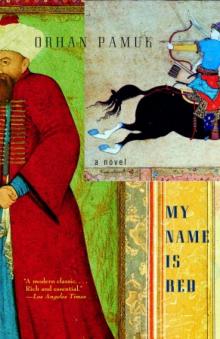 My Name is Red
My Name is Red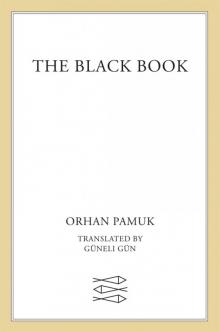 The Black Book
The Black Book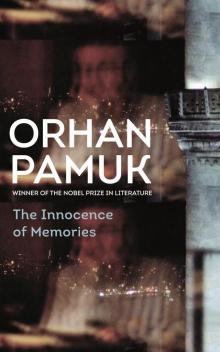 The Innocence of Memories
The Innocence of Memories The White Castle
The White Castle Other Colors
Other Colors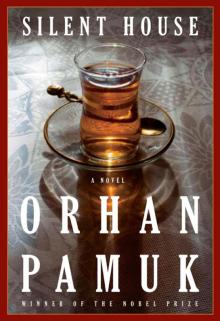 Silent House
Silent House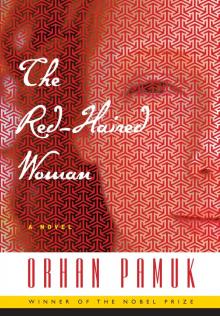 The Red-Haired Woman
The Red-Haired Woman The Museum of Innocence
The Museum of Innocence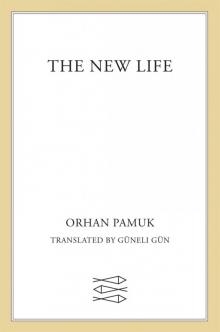 The New Life
The New Life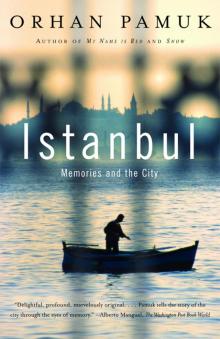 Istanbul
Istanbul